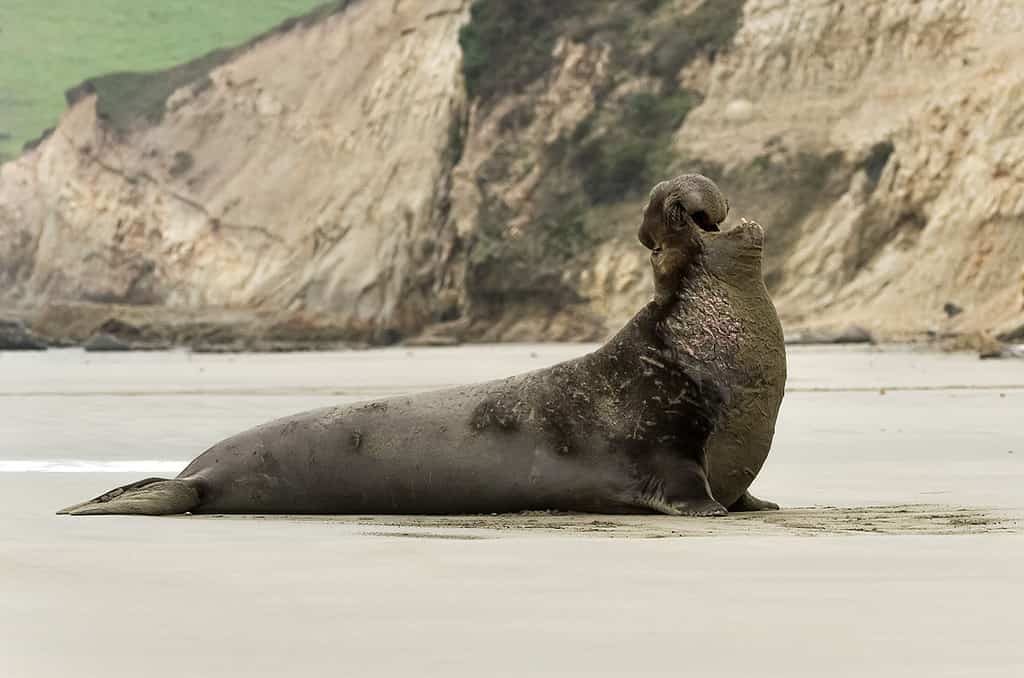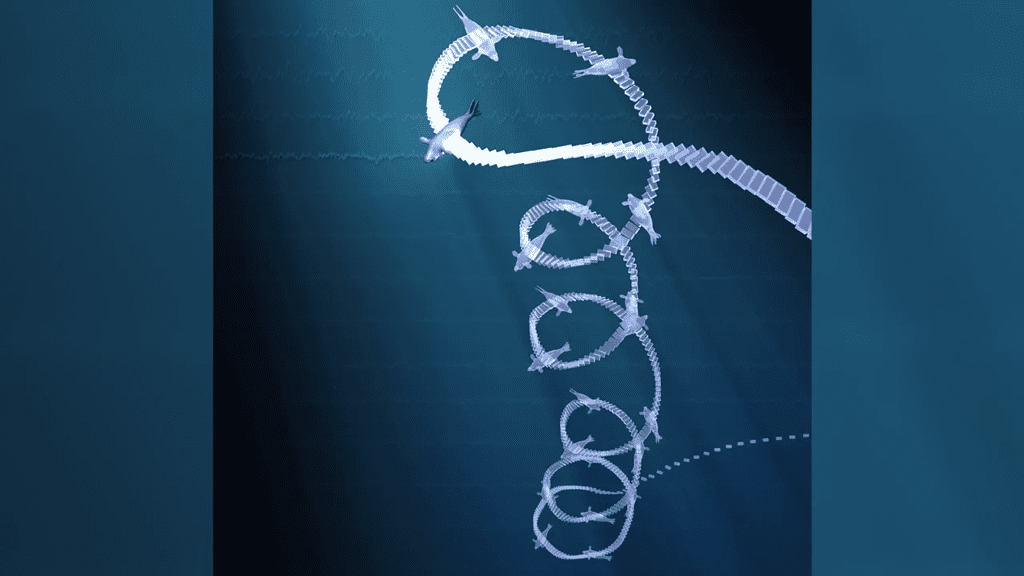Researchers recorded the brain activity of these seals as they swam for thousands of kilometers and found a striking pattern. Firstly, these creatures only seem to sleep two hours a day. Even more intriguingly, they dive up to 2,500 ft (760 m) in what researchers call “nap-like sleeping dives”.

The northern elephant seal (Mirounga angustirostris) is one of two species of elephant seal. The other is (you’ve guessed it) the southern elephant seal. The males of the northern species grow much larger than the females. They can reach 1,500–2,300 kg (3,300–5,100 lb) and measure 4–5 m (13–16 ft). Some members have been found to weigh up to 3,700 kg (8,200 lb).
Despite this, however, they are nimble and able divers. It’s not just swimming, either. Their entire bodies are well-adapted to thrive in the cold northern waters they inhabit.
For instance, their bloodstreams have a mixture of small veins that capture heat and keep the extremities sufficiently warm. Their eyes are large and black, with a high concentration of low-light receptors. This enables them to track down prey underwater, in dim light. A unique characteristic of the northern elephant seal is that it has developed the ability to store oxygenated red blood cells within its spleen.
The males are excellent divers, but the females are absolutely mind-blowing. Keep in mind, these are mammals. But the females can dive almost continuously for 20 hours or more a day, in the open waters, mostly in 400- to 600-meter-deep water. They can go down to a whopping 1735 m and eat fish close to the bottom of the ocean.
Researchers have long been puzzled by their abilities. In the new study, University of California Santa Cruz researcher Jessica Kendall-Bar and colleagues developed a non-invasive sensor that enables them to track the brain activity of the seals. They focused on seals off the coast of California. Overall, they tracked the seals for seven months — several seals swam over 6,000 miles in this period.
But then, things got really weird.
Sleeping to the abyss
Over the years, researchers have developed a way to track when the seals are sleeping. But the team shockingly found that at depths of over 300 meters, the seals would fall asleep and start descending into the depths.
This isn’t a light sleep or a small rest. This is a deep sleep; in fact, researchers described them as “sleep spirals” in which the seals “look like falling leaves.” They enter the rapid-eye-movement (REM) phase and lose control of their posture and continue to spiral down in a corkscrew pattern.

“The thing I find remarkable is that any mammal would fall asleep while drifting hundreds of metres below the water surface,” lead researcher Prof Terrie Williams, from UC Santa Cruz, told BBC News. “This is not light sleep but real paralytic, deep sleep that would have humans snoring. Remarkably, the seal’s brain reliably wakes them out of it before running out of oxygen. Imagine waking up on the bottom of a pool – it sends a shiver down the spine.”
As creepy as this sounds, it may be crucial to the seals’ survival. It may enable them to catch some shut-eye while drifting to depths where its predators (great white sharks and killer whales) don’t hunt. But really, we don’t know why and how they manage to sleep under these conditions.
No doubt, there’s much we still have to learn about how these animals sleep. In fact, we barely know anything about this at all.
“As of right now, we don’t have any understanding of how and when marine mammals sleep at sea, and how our activities as humans might impact their ability to sleep,” said lead study author Jessica Kendall-Bar, postdoctoral fellow at the Scripps Institution of Oceanography at the University of California, San Diego. “Studies have only ever looked at marine mammal sleep in captivity, but clearly that’s not an accurate representation of how they sleep in the wild.”
The study was published in Science.









